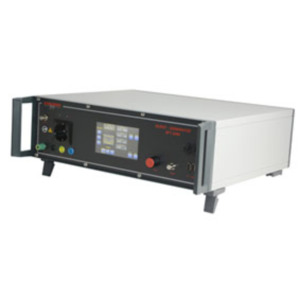
- Description
- Attributes
- Documents
- Clearly arranged control elements allow time-saving and optimized tests
- All parameters can be changed during the test
- With the memory function, the normative test levels 1, 2, 3 and 4 are stored
- Additionally, own test sequences can be stored
- Special functions, like real burst or noise
- Extensive range of accessories available
- USB, optional optical interface with fiber optic cable
- Burst frequency: Single pulse up to 125 kHz
- Burst duration: 0.01 - 100 ms (limit parameters are automatically taken into account)
- Burst period: 10 -1000 (limit parameters are automatically taken into account)
- Pulse voltage: 100 V - 5000 V
- Polarity of burst packet: positive, negative, alternating
- Waveform according to IEC 61000-4-4: 5 ns / 50 ns
- Capacitive color touch display
- Max. Pulses / sec: 5000 (up to 2 kV), 3000 (up to 3 kV), 1500 (up to 5 kV)
- Max. Pulses / packet: 500
- Trigger: manual or external
- HV output: coaxial socket
- Monitor output: BNC, TTL level
- Interface: USB (virtual COM port)
- Optional: optical (Toshiba LWL)
- Internal single-phase coupling network
- Weight: 9 kg
The SFT 2400 simulates fast transient interference pulses as defined in the standards IEC 61000-4-4 and DIN EN 61000-4-4. Due to the very short rise time of 5 ns, the individual impulses generate a broadband RF spectrum up to 300 MHz. RF interference is the result.
The simple operation is carried out via a capacitive colour touch display. All parameters are clearly shown on the display and can be quickly changed by touching and using a digital rotary encoder. The standard test levels 1, 2, 3 and 4 are pre-programmed, additional test sequences can be stored via the memory function.
Special functions:
The generator also offers various special functions such as "Real Burst", which simulates the natural appearance of the burst pulse, or "Noise". The functions "IFM" and "DFM" (increasing or decreasing frequency within a burst packet) are important tools for investigating resonance or saturation effects in the EUT.
